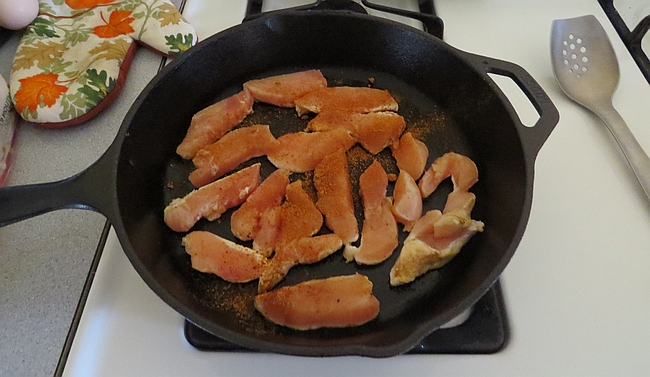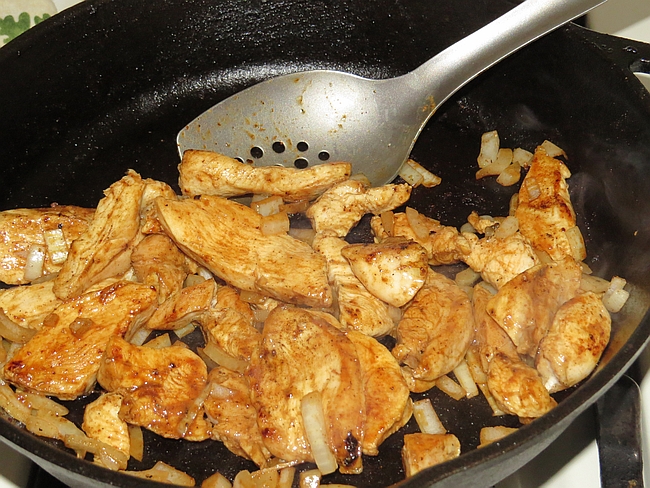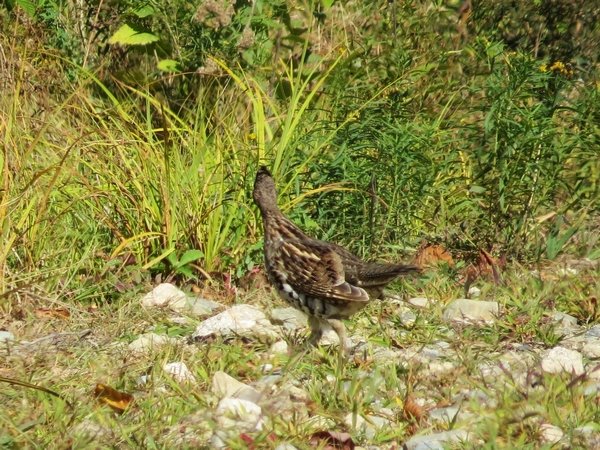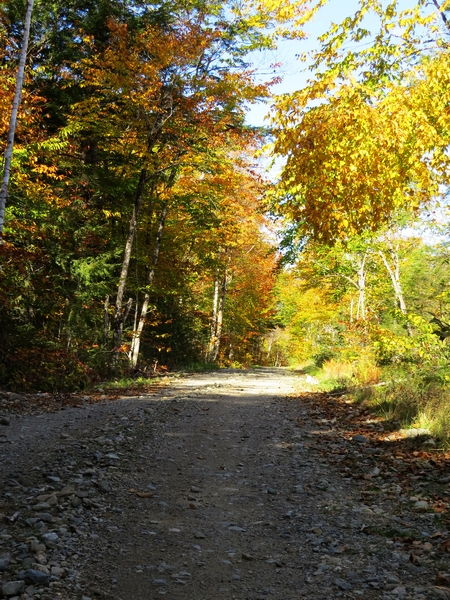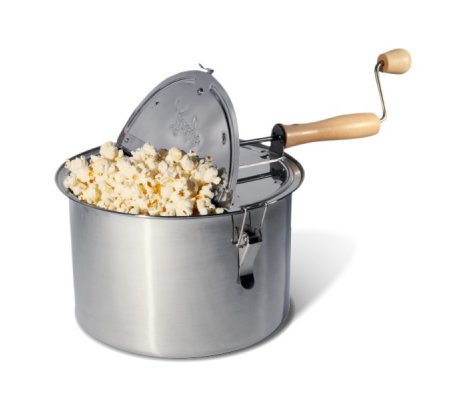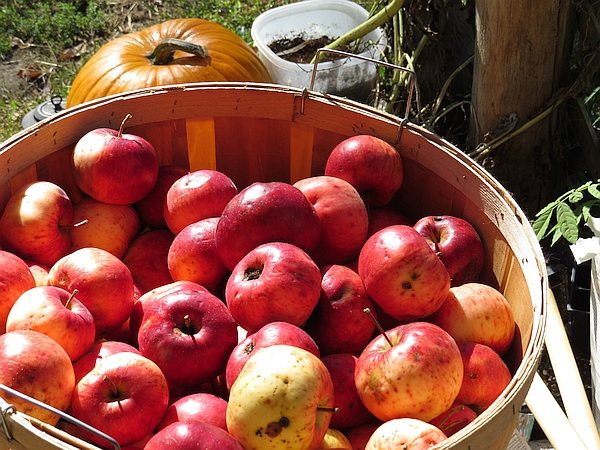The piglets arrived in late June. They ate all our food scraps, lots of spent plants from the garden, grass and clover in their pasture, and some commercial pellets. During a harsh old spell when the overnight temps dropped close to 0* they enjoyed a can of cracked corn each and extra flakes of hay. Everything was late except the cold weather. I was concerned about Red and White staying warm, and that maybe there wouldn’t be enough fat for salt pork.
There was no need for concern. I made put up 36 pounds of salt pork today. It will sit at the bottom of the cellar stairs, hovering above freezing, for the next month. I’ll check it weekly to be sure it’s curing rather than spoiling.
I wasn’t able to find the tons of information I expected on curing pork, specifically how to make salt pork, online. Turns out there’s not a lot to write about. It’s a simple process.
My pork belly was cut into slabs, vacuum packed and flash frozen by the butcher. I thawed the pork overnight in a cooler.
You’ll need a container for your pork. A crock is great. If you don’t have a crock you can use stainless steel, plastic or glass. Wash your container thoroughly.
Salt Pork Recipe
Cut 2.5 pounds of pork belly into slabs that are six to eight inches wide. Rinse each piece with cool water and dry well with paper towels.
For each 2.5 pounds, mix together:
10 oz Kosher or sea salt
1/3 cup white sugar
That’s it. This is very basic. Coat each piece of pork belly and stack them close together in your containers.
I put a 1/4″ layer of salt and sugar on the bottom of the container before placing the first pieces. Add more salt and sugar blend to the pieces to make up for any you lose when moving the fat. More salt than necessary isn’t better. You don’t want your salt pork to be so salty it’s hard to use.
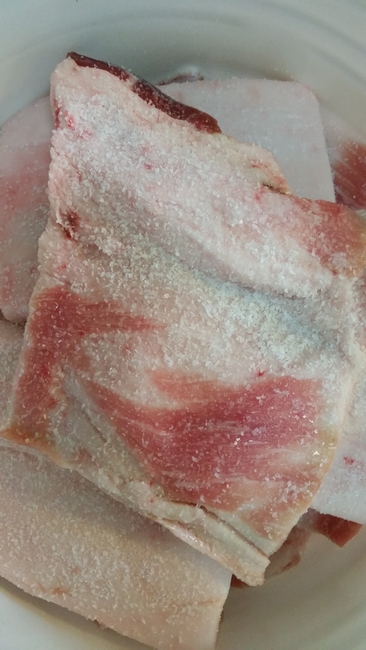
My container of salt pork is sitting at the entry of the cold cellar (they lead in from outdoors so it stays cold), on the cold side that hasn’t been blocked to keep the cold out. I’ll check it every few days, and I plan to let it cure for at least a month. When it’s done I’ll wash the salt off, dry the salt pork well, and vacuum pack it before placing it in the freezer. My cellar won’t stay cold
One of the first recipes I’ll use the salt pork in is Boston Baked Beans. They’re a traditional Saturday meal around here. I’ll slice the salt pork and place it on top of the beans. The pork will help the beans stay moist and the meat will be delicious. I’m also going to dice pork to fry pan fried potatoes and saute mixed greens.
There’s always a little concern about using fat. Moderation! Use a little, only what you need. Use the same caution with salt pork that you use with butter and all other fats. This fat is all natural real food. Enjoy!

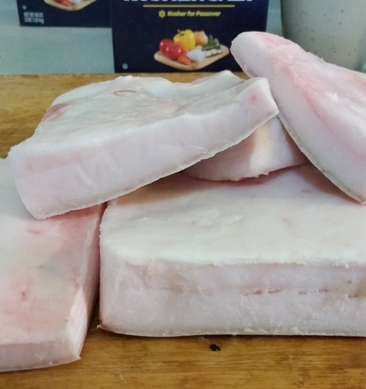
![Pond, woods, [NeighborWoods]](http://www.homesteadersupply.com/blog/wp-content/uploads/2014/11/pond-in-the-woods.jpg)
